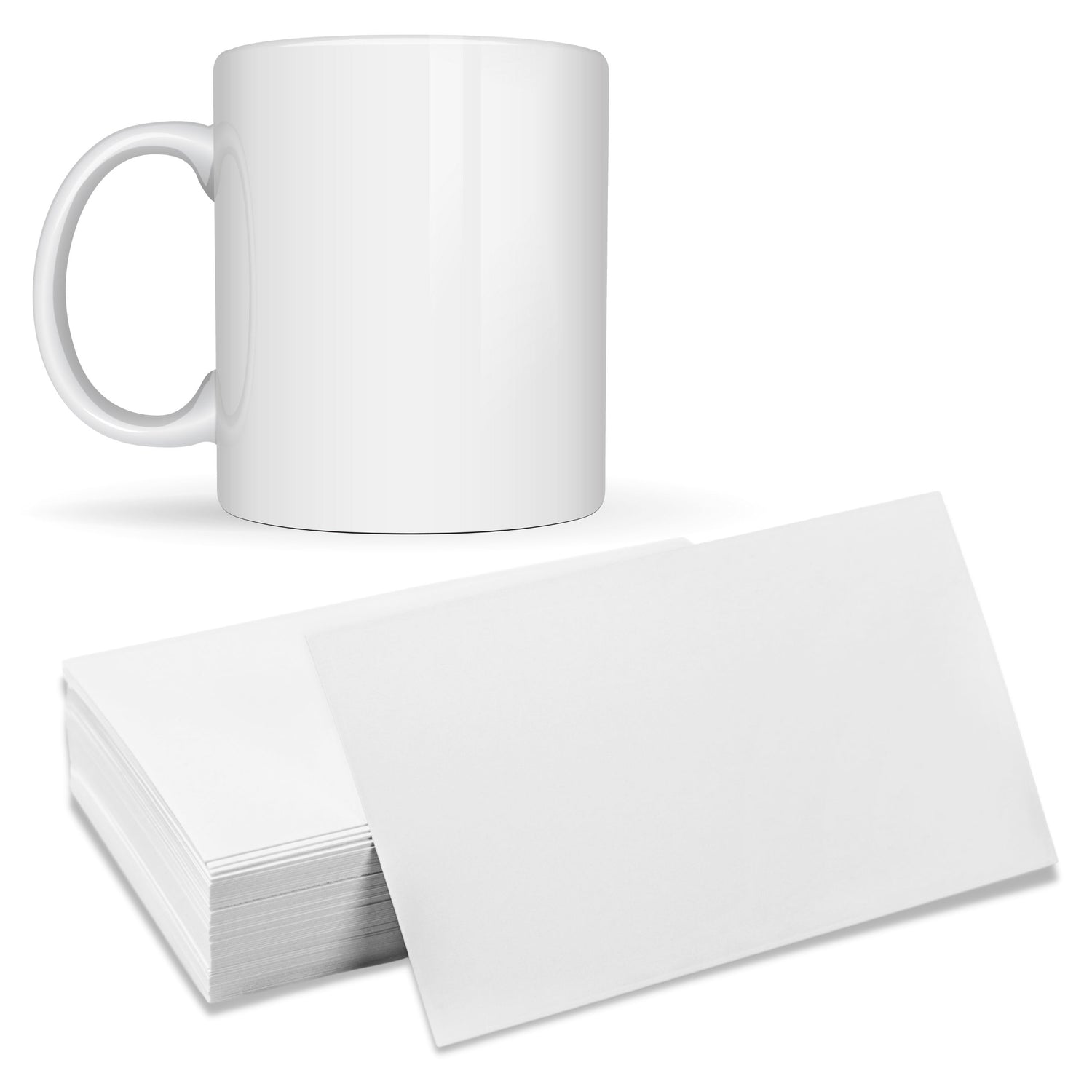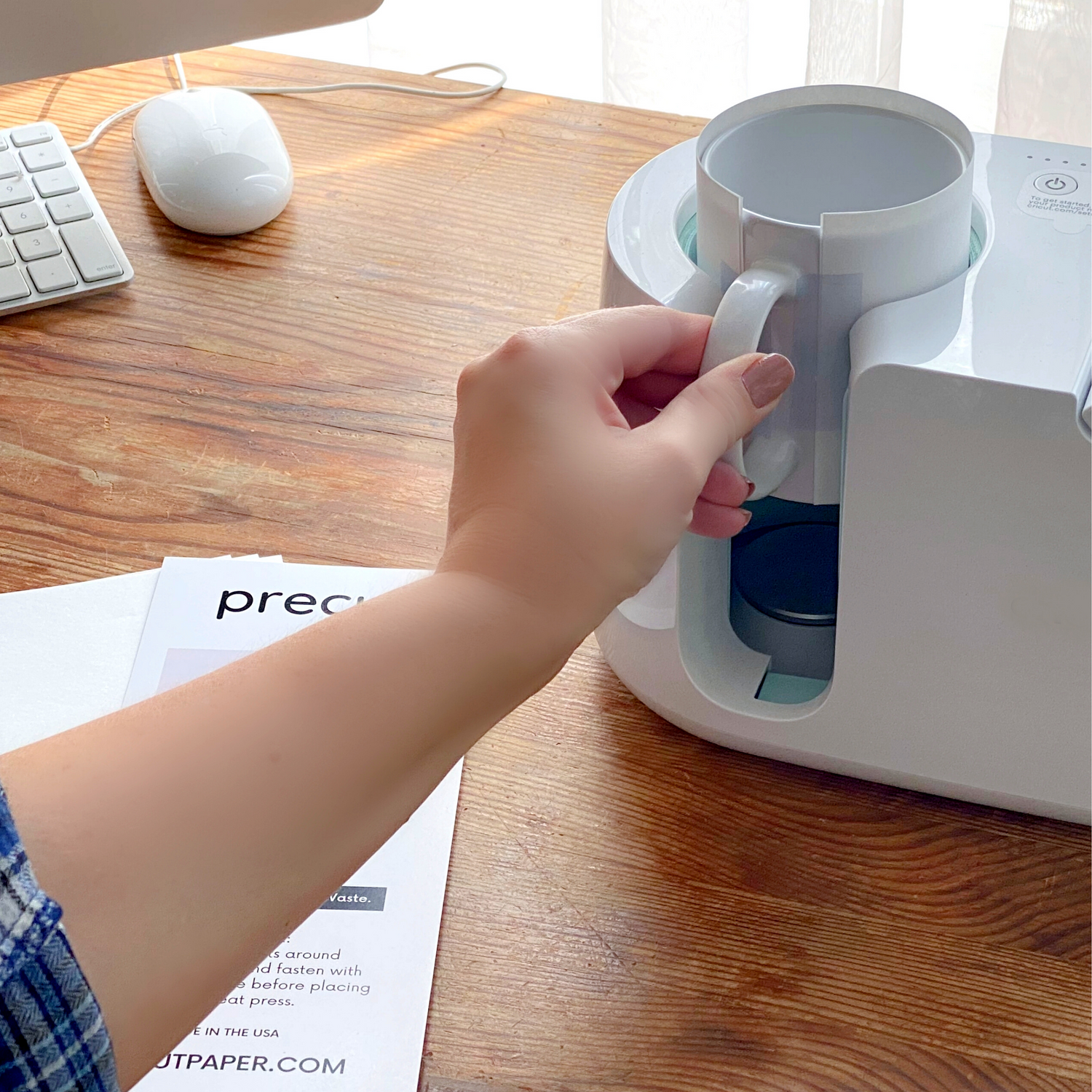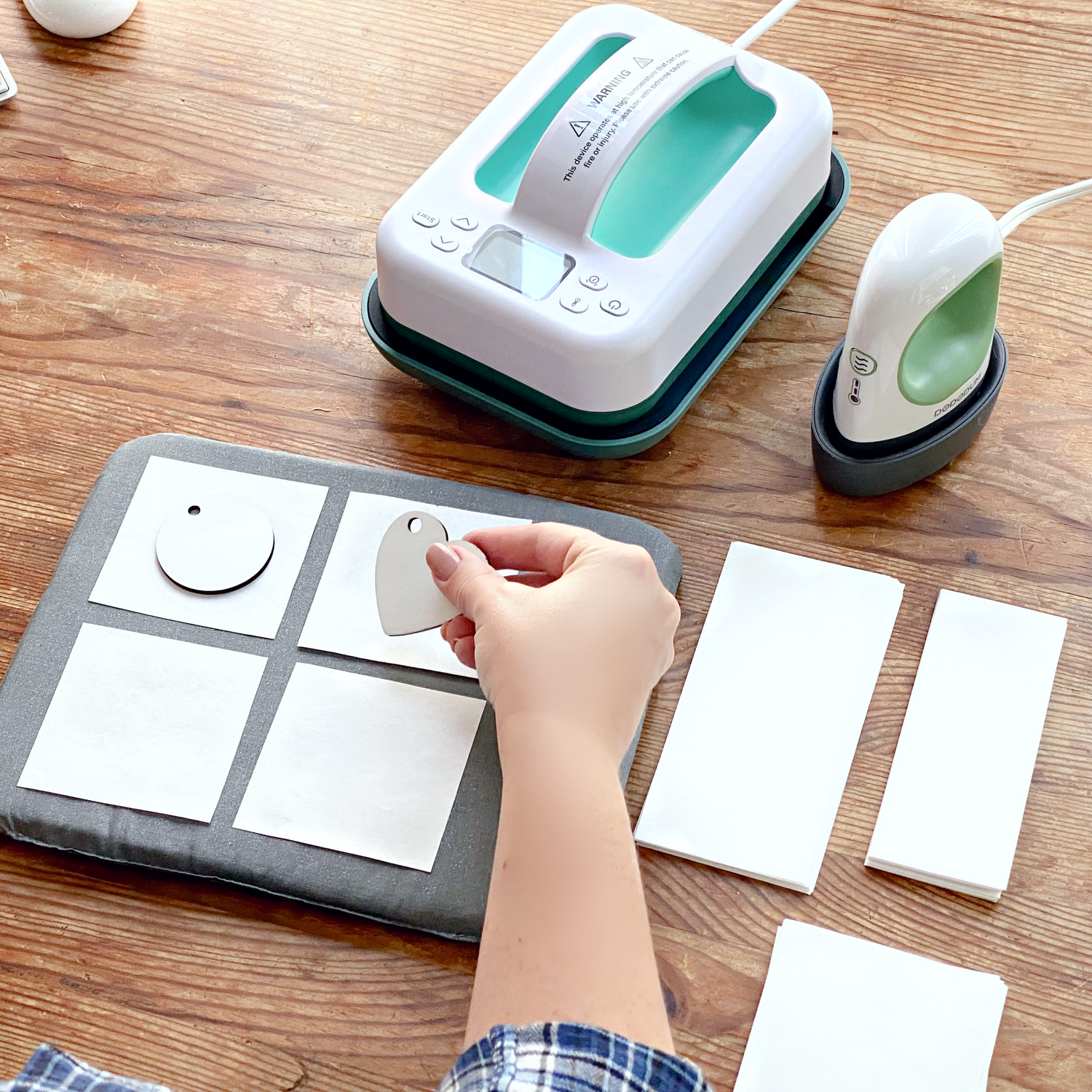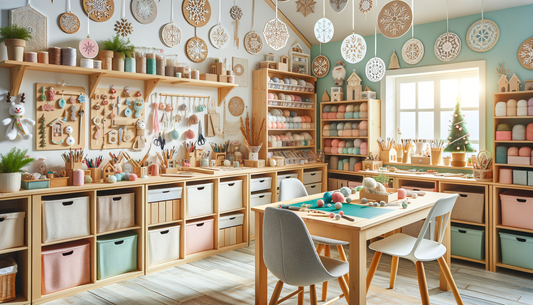
The Complete Guide to Choosing Butcher Paper for Sublimation and Heat Press Crafting
Heat press crafting and sublimation printing have revolutionized the world of custom apparel, accessories, and personalized gifts. Whether you're a seasoned professional running a custom print shop or a passionate hobbyist exploring creative possibilities, one often-overlooked component can make or break your projects: butcher paper.
The right butcher paper isn't just a nice-to-have accessory—it's an essential tool that protects your heat press, ensures consistent results, and can dramatically improve the quality of your finished products. Yet many crafters struggle to understand what makes one butcher paper superior to another, often settling for whatever's available at their local store.
Why Butcher Paper Matters in Heat Press Applications
Before diving into the specifics of paper selection, it's crucial to understand why butcher paper plays such a vital role in heat press operations. During sublimation and heat transfer processes, you're working with high temperatures (typically 350-400°F) and significant pressure for extended periods. This environment creates several challenges that quality butcher paper addresses:
Heat Distribution: Premium butcher paper acts as a thermal barrier, helping distribute heat evenly across your substrate while protecting both your heat press plates and your projects from direct contact that could cause scorching or uneven heating.
Moisture Management: Sublimation requires the removal of moisture from fabrics and substrates. Quality butcher paper absorbs excess moisture without breaking down, preventing steam pockets that can ruin transfers.
Release Properties: The paper must release cleanly from your projects without leaving residue or tearing, which could damage finished pieces or contaminate future projects.
Reusability: Professional-grade butcher paper can often be used multiple times, making it cost-effective for high-volume operations while maintaining consistent performance.
The Anatomy of Superior Butcher Paper
Not all butcher paper is created equal. Understanding the key characteristics that define high-quality butcher paper will help you make informed decisions and achieve better results in your crafting projects.
Weight and Thickness
The weight of butcher paper, measured in pounds per ream, directly impacts its performance under heat and pressure.
Premium butcher paper typically weighs between 40-60 pounds per ream, offering the ideal balance of durability and flexibility. This weight provides sufficient thermal mass to distribute heat evenly while maintaining the structural integrity needed to withstand repeated pressing cycles.
Fiber Composition and Manufacturing
The source and processing of paper fibers significantly affect performance. Virgin wood pulp papers generally outperform recycled alternatives in heat press applications because they maintain stronger fiber bonds and resist breaking down under thermal stress.
The manufacturing process also matters. Papers that undergo controlled calendering (pressing between heated rollers) develop a smoother, more consistent surface that promotes even heat transfer and reduces the likelihood of texture transfer to your projects.
Surface Properties
The surface characteristics of butcher paper influence both heat transfer efficiency and release properties. A slightly textured surface can help with heat distribution while preventing the paper from sticking to substrates. However, excessive texture can create uneven pressure points that result in inconsistent transfers.
The ideal butcher paper features a controlled, uniform surface texture that balances heat distribution with clean release properties. This surface should be consistent across the entire sheet, without variations that could affect performance.
Chemical Composition and Treatments
Many commercial butcher papers include chemical treatments for various applications, but these can be problematic in heat press use. Wax coatings, for instance, can melt and transfer to your projects or heat press plates. Similarly, certain bleaching processes can leave chemical residues that become volatile under high heat.
The best butcher paper for sublimation and heat press work is free from wax coatings, excessive chemical treatments, and uses minimal bleaching processes. This ensures that no unwanted substances migrate to your projects or equipment under heat and pressure.
Identifying Quality: What to Look For
When evaluating butcher paper options, several indicators can help you identify superior products:
Tear Resistance: Quality paper should resist tearing when handled normally but not be so thick that it interferes with heat transfer. Test a corner by pulling gently—it should stretch slightly before tearing cleanly.
Heat Tolerance: Examine how the paper responds to high heat. Premium papers maintain their structure and color when exposed to press temperatures, while lower-quality options may brown, become brittle, or develop hot spots.
Moisture Absorption: Good butcher paper absorbs moisture gradually and evenly without becoming soggy or falling apart. Pour a small amount of water on a test piece and observe how it spreads and absorbs.
Consistency: Check for uniform thickness, color, and texture across the sheet. Variations indicate inconsistent manufacturing that can affect performance.
Common Mistakes in Paper Selection
Many crafters make similar errors when choosing butcher paper, often based on price considerations or limited understanding of quality factors:
Choosing Based on Price Alone: While budget considerations are important, the cheapest option rarely provides the best value. Poor-quality paper can ruin projects, damage equipment, and actually cost more in the long run due to waste and rework. Crafters are usually the first to let people know if a product is good or bad -- so read the reviews on amazon before purchasing! 200 sheets of terrible paper that's 50% cheaper might actually ruin your machine.
Ignoring Intended Use: Papers designed for food service may seem similar to craft-grade options, but they often include treatments or properties that perform poorly in heat press applications.
Overlooking Storage Requirements: Even quality paper can degrade if stored improperly. Papers exposed to humidity, extreme temperatures, or direct sunlight may not perform as expected, regardless of their initial quality. Because most butcher papers are in rolls or large sheets, they are usually left out on a craft room. FYI, our butcher paper comes in sleek, slim packs so you can put them away and out of the elements.
One-Size-Fits-All Thinking: We make paper for different craft blank sizes -- e.g., 11/12 oz mug paper, 15 oz mug paper, tumbler paper, etc. Getting the right paper that fits your craft blank size will make crafting a breeze. No mess, no wasted paper.
Why We Actually Started Precut Butcher Paper
I'll be honest—this whole business started because I was fed up.
I'd been running a small sublimation shop for a few years, and I was constantly battling with butcher paper. You know the drill: drive to three different stores trying to find decent paper, come home with a massive 1000-foot roll that barely fits in my car, then spend half my Sunday measuring and cutting sheets while my family wondered why I was cursing at paper in the garage.
The breaking point came during a particularly busy week when I had a rush order for 200 custom mugs. I'd grabbed what I thought was my usual paper from the supply store, but this batch was different—thinner, with some kind of coating that started smoking at 375°F. I lost four mugs and nearly two hours of work before I figured out what was happening.
That night, cutting replacement sheets at 11 PM with a ruler and box cutter, I thought: "There has to be a better way."
The Real Problem Nobody Talks About
Here's what the big supply companies don't understand: most of us aren't industrial operations. We don't need 50-pound rolls of paper. We need 50 sheets that work perfectly, every single time.
I started asking other crafters in my local Facebook groups about their paper struggles. The responses were eye-opening. Everyone had stories—wasted projects, ruined substrates, paper that worked great one month and terribly the next. One woman told me she'd started buying three different brands just to have backups because she never knew which batch would be inconsistent.
We were all settling for "good enough" because finding truly reliable butcher paper felt impossible.
The Lightbulb Moment
Then it hit me—we needed to do with butcher paper what hairdressers did with cutting foil for hair highlights.
Think about it: hairdressers used to cut aluminum foil sheets one by one during color sessions. It was time-consuming, inconsistent, and frankly annoying. Then someone had the brilliant idea to precut foil to standard sizes. That simple change revolutionized how hair was colored—faster application, less mess, consistent results every time.
Precut butcher paper is exactly the same concept for crafters. It takes the most annoying part of heat pressing—measuring and cutting paper—and completely flips it. No more rulers, no more box cutters, no more wasted paper from cutting mistakes. Just grab a sheet and start creating.
I cut all the paper personally and package each order by hand. It might sound crazy in an age of automation, but I love the personal touch. One of the most fun parts of this job is seeing where our paper goes—we've shipped to almost every state and even internationally! Getting messages from crafters in Australia or Canada using our paper for their projects never gets old. I even add the customer's name to packages when it's one of the funny sizes I have to manually cut.
We're constantly excited to add more sizes and products based on what you tell us you need. But most importantly, we're honored that you invite us into your creative life as you do what makes you happy.
What Actually Matters to Us
Look, I could give you corporate speak about "quality commitments" and "customer satisfaction metrics." But here's the truth: I use this paper every day in my own shop. My reputation depends on it working perfectly, just like yours does.
When I say we test every batch, I mean I personally check samples before we ship anything. When I say the paper is consistent, I mean you could use a sheet from lot A and lot B six months apart and get identical results.
This isn't just business for us—it's personal. Every order that goes out represents another crafter who won't have to deal with the frustrations that drove me to start this company in the first place.
The Investment in Quality
Premium butcher paper represents a small fraction of your overall project costs but can have a disproportionate impact on results. When you consider the cost of ruined substrates, wasted time on rework, potential equipment damage, and the value of consistent professional results, investing in quality paper becomes an obvious choice.
Quality butcher paper isn't an expense—it's an investment in your craft, your efficiency, and your reputation. Whether you're creating custom t-shirts for a local sports team or building a thriving online personalization business, the materials you choose reflect your commitment to excellence.
The right butcher paper provides peace of mind, allowing you to focus on creativity and growth rather than troubleshooting material issues. It enables you to take on more challenging projects with confidence and deliver results that keep customers coming back.
At Precut Butcher Paper, we're committed to providing the materials that empower your success. Every sheet we produce represents our belief that crafters deserve the best tools available, delivered with the convenience and consistency that modern operations demand.
Your projects deserve nothing less than the best foundation. Choose wisely, craft confidently, and create without limits.
Thank you for checking out Precut Paper! We hope you try our precut butcher paper soon and let us know what you think.











